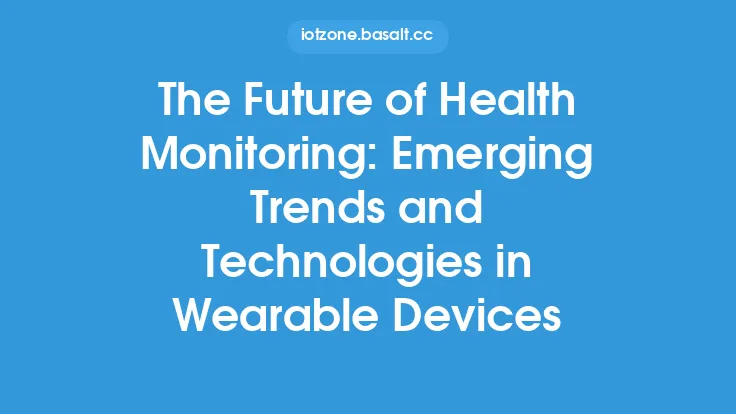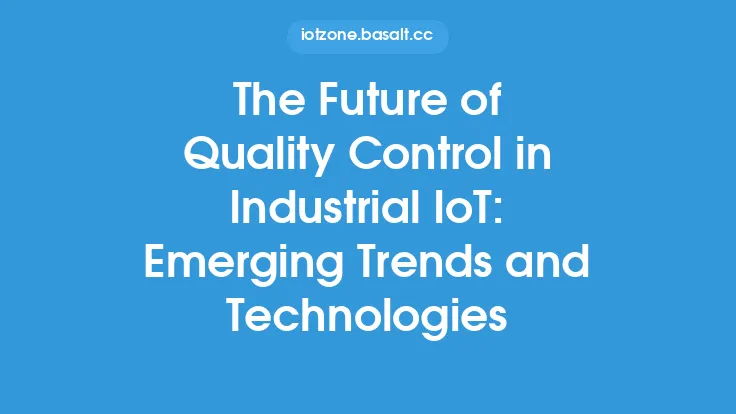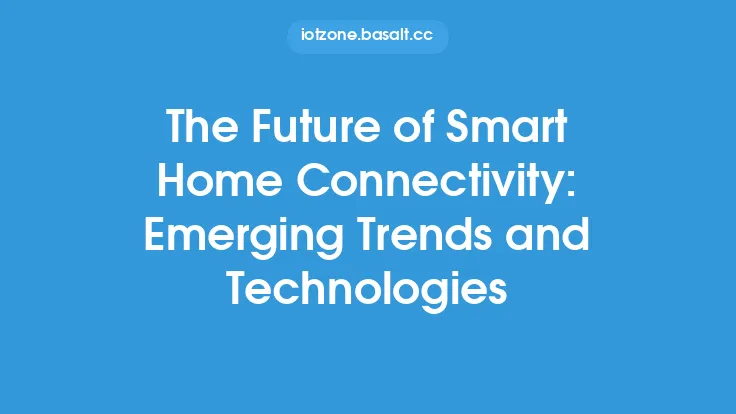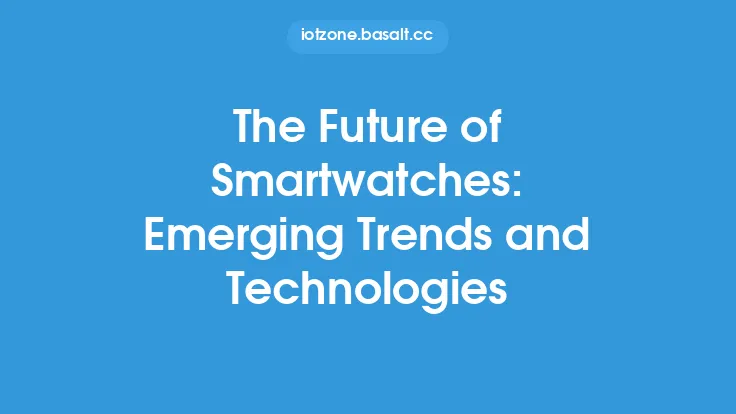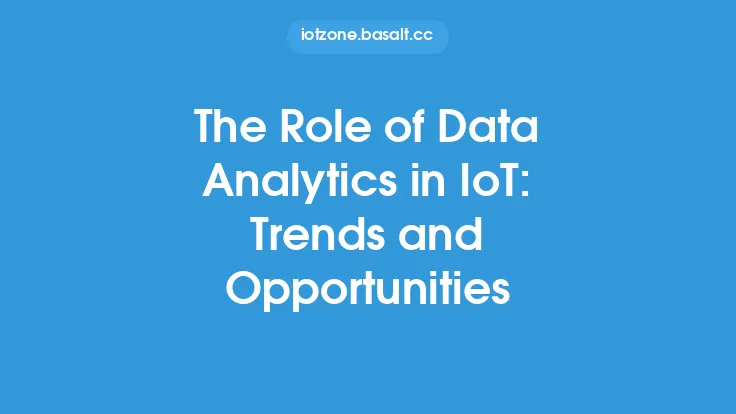The Internet of Things (IoT) has revolutionized the way we live and interact with devices, with an estimated 41.4 billion connected devices expected to be in use by 2025. As the number of IoT devices continues to grow, so does the amount of data they generate, making data protection a critical concern. The sheer volume and variety of data collected by IoT devices, including personal, sensitive, and confidential information, create a vast attack surface that can be exploited by malicious actors. Therefore, it is essential to review the emerging trends and technologies in data protection for IoT devices to ensure the security and integrity of the data they collect and transmit.
Introduction to IoT Data Protection
IoT data protection refers to the practices, technologies, and strategies used to safeguard the data collected, stored, and transmitted by IoT devices. This includes protecting against unauthorized access, use, disclosure, disruption, modification, or destruction of data. IoT data protection is a complex challenge due to the unique characteristics of IoT devices, such as their limited computational resources, battery life, and network connectivity. Moreover, IoT devices often operate in unsecured environments, making them vulnerable to various types of attacks.
Emerging Trends in IoT Data Protection
Several emerging trends are shaping the landscape of IoT data protection. One of the most significant trends is the adoption of Artificial Intelligence (AI) and Machine Learning (ML) to enhance IoT security. AI-powered security solutions can detect and respond to threats in real-time, reducing the risk of data breaches. Another trend is the use of blockchain technology to secure IoT data. Blockchain-based solutions can provide a secure and decentralized way to store and manage IoT data, ensuring its integrity and authenticity. Additionally, the increasing use of edge computing is also transforming IoT data protection. By processing data closer to the source, edge computing can reduce the amount of data that needs to be transmitted and stored, minimizing the risk of data breaches.
Technologies for IoT Data Protection
Several technologies are being used to protect IoT data, including encryption, secure communication protocols, and secure data storage solutions. Encryption is a critical technology for protecting IoT data, as it ensures that even if data is intercepted or accessed unauthorized, it will be unreadable. Secure communication protocols, such as Transport Layer Security (TLS) and Datagram Transport Layer Security (DTLS), are also essential for protecting IoT data in transit. Furthermore, secure data storage solutions, such as secure cloud storage and on-device storage, can provide an additional layer of protection for IoT data.
Cryptographic Techniques for IoT Data Protection
Cryptography plays a vital role in IoT data protection, as it provides a secure way to protect data from unauthorized access. Several cryptographic techniques are being used to protect IoT data, including symmetric key encryption, asymmetric key encryption, and hash functions. Symmetric key encryption, such as Advanced Encryption Standard (AES), is widely used to protect IoT data due to its high performance and low computational overhead. Asymmetric key encryption, such as RSA and elliptic curve cryptography, is also used to protect IoT data, particularly for key exchange and authentication. Hash functions, such as Secure Hash Algorithm (SHA), are used to ensure the integrity and authenticity of IoT data.
Secure Communication Protocols for IoT
Secure communication protocols are essential for protecting IoT data in transit. Several protocols are being used to secure IoT communication, including CoAP, MQTT, and LWM2M. The Constrained Application Protocol (CoAP) is a lightweight protocol that provides a secure way to communicate between IoT devices and the cloud. Message Queuing Telemetry Transport (MQTT) is a publish-subscribe-based protocol that provides a secure and efficient way to communicate between IoT devices and the cloud. The Lightweight Machine-to-Machine (LWM2M) protocol is a device management protocol that provides a secure way to manage and monitor IoT devices.
IoT Data Protection Standards and Regulations
Several standards and regulations are being developed to ensure the security and integrity of IoT data. The General Data Protection Regulation (GDPR) is a comprehensive regulation that provides a framework for protecting personal data in the EU. The California Consumer Privacy Act (CCPA) is a regulation that provides a framework for protecting consumer data in California. The National Institute of Standards and Technology (NIST) has also developed a framework for IoT device security, which provides guidelines for securing IoT devices and data. Additionally, the Industrial Internet Consortium (IIC) has developed a framework for IoT security, which provides guidelines for securing IoT systems and data.
Challenges and Future Directions
Despite the emerging trends and technologies in IoT data protection, several challenges remain. One of the significant challenges is the lack of standardization in IoT security, which can make it difficult to develop and implement secure solutions. Another challenge is the limited computational resources and battery life of IoT devices, which can limit the use of advanced security technologies. Furthermore, the increasing use of AI and ML in IoT devices can also create new security challenges, such as the risk of AI-powered attacks. To address these challenges, future research should focus on developing lightweight and energy-efficient security solutions, as well as standards and regulations that can ensure the security and integrity of IoT data.
Conclusion
In conclusion, data protection is a critical concern in the IoT ecosystem, and several emerging trends and technologies are shaping the landscape of IoT data protection. The use of AI, blockchain, and edge computing can enhance IoT security, while cryptographic techniques, secure communication protocols, and secure data storage solutions can provide an additional layer of protection for IoT data. However, several challenges remain, including the lack of standardization, limited computational resources, and the risk of AI-powered attacks. To address these challenges, future research should focus on developing lightweight and energy-efficient security solutions, as well as standards and regulations that can ensure the security and integrity of IoT data. By prioritizing IoT data protection, we can ensure the security and integrity of the data collected, stored, and transmitted by IoT devices, and build trust in the IoT ecosystem.
